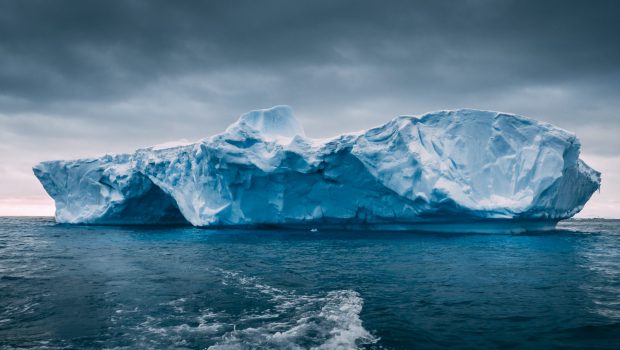Stanford Researchers Apply a Combination of Autonomous Drone Technology With Scientific Machine Learning To Find How Fast Will Antarctica’s Ice Sheet Melt and Reduce The Uncertainty of Sea-Level Rise
https://www.ispeech.org/text.to.speech
Ice protects the Earth layer and its oceans by acting as a shield. Excess heat is reflected into space by these dazzling white spots, keeping the Earth cold. Many glaciers throughout the world have been melting quickly since the early 1900s. Human actions cause this phenomenon. Carbon dioxide (CO2) and other greenhouse gas emissions have elevated temperatures since the industrial revolution.
Melting glaciers are a contributing factor in rising sea levels, which leads to an increase of coastal erosion and storm surge. Warmer air temperatures lead directly into more frequent storms like hurricanes or typhoons with stronger winds that cause even greater damage on land. Many cities are already planning to deal with long-term flooding, which may carry salt and moisture into houses and infrastructure, jeopardize drinking water and agriculture, and severely damaged ports.
Given the gravity of the problem, it is critical to understand how much and how quickly sea levels will rise. The projections in the existing predictive models made by scientists are pretty uncertain. Since the contribution from the southernmost continent is so unknown, governments worldwide must consider an unlimited number of scenarios when planning for the future.
A group of Stanford University scientists employed autonomous drone technology and machine learning approach to focus their efforts on discovering and gathering the most valuable data in Antarctica to increase our understanding of the processes that drive sea-level rise.
Modern Problems require Modern Solution:
We’re dealing with a challenging, technical, and AI-heavy problem. This necessitates more efficient and intelligent data collection. The scientists take a two-pronged approach to this problem. To begin, they set out to create a new data-collecting platform that would rely on autonomous drones equipped with ice-penetrating radar to acquire more accurate readings. The current method entails flying around Antarctica in World War II planes for months or erecting pricey field camps in the middle of the ice sheet. According to the researchers, UAVs might provide a long-term monitoring solution that is both sustainable and practically automated.
The second phase involved establishing where the most valuable data could be found. Imagine if researchers could use unique algorithms to tell them when and where to send their drones to maximize the impact of their research.
Let us see under the ice:
The melting of ice sheets is affected by numerous factors. The depth of the ice bed, whether it’s frozen or melted, and the actual temperature of the ice are all things that researchers want to know. They must also comprehend how the melting rate is affected by tides, seasons, and the passage of time. To add to the difficulty, some of the closest measurements recorded are from a dataset far from reality for a region covering 5.5 million square miles of the planet.
Since Antarctica is so large, judgments must be taken regarding where and when to collect data to reduce uncertainty. This is where artificial intelligence (AI) comes in. Machine learning algorithms are deployed to decide where the new drones are most likely to find the most valuable data. These preliminary models combine well-known physics rules that regulate how ice reacts to environmental conditions and apply them to tiny datasets. As a result, the algorithms may run swiftly and generate recommendations.
Finally, this group envisions an iterative cycle or adaptive surveying procedure. Researchers will be able to assess the observations of the ice bed, the 3D flow of the ice, and the principles that govern its movement all at once if they take a data-driven strategy. The models process each fresh batch of data in real-time to determine a constantly changing flight plan.
Mountain Glaciers:
The team has begun concentrating on ice shelves on the ML side of the project, which have exciting dynamics on a smaller scale than the polar ice sheet. If the models can learn and forecast how quick changes have significant effects on ice shelves, it will be a substantial step toward addressing the broader problem of ice sheets.
The researchers expect that this two-part method will increase their ability to monitor and predict changes to the ice sheet and assist these cities in planning for the future. This research can potentially change the way all glaciologists collect and interpret data in the long run. However, the current goal is to concentrate on making ice sheet research more intelligent and efficient.
Reference:
- https://hai.stanford.edu/news/how-fast-will-antarcticas-ice-sheet-melt
Related Paper for AI: https://www.osti.gov/servlets/purl/1595805
Suggested








Gloss